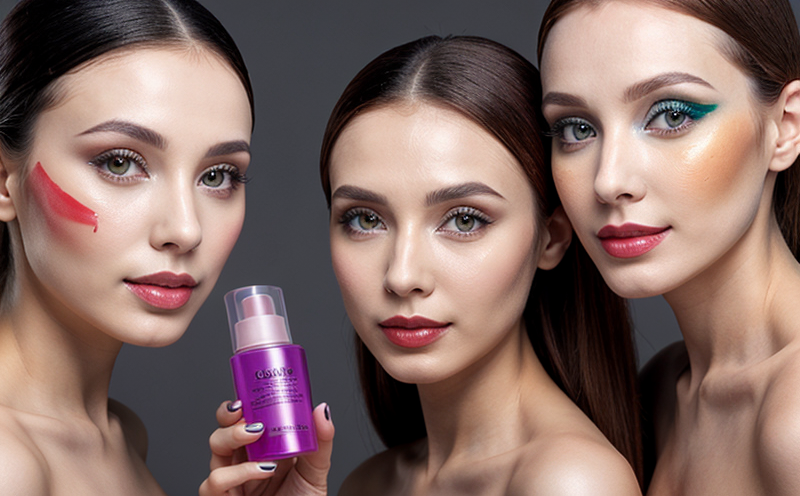Post-Market Safety Surveillance for Cosmetics
The post-market safety surveillance of cosmetic products is a critical phase in ensuring consumer protection and product integrity. Post-market testing involves monitoring the performance, use patterns, and any adverse effects associated with cosmetics after they have been released into the market. This process helps identify potential risks that might not have been detected during preclinical or clinical trials.
For quality managers and compliance officers, post-market safety surveillance is essential for maintaining a positive brand image and regulatory compliance. R&D engineers can use this information to refine product formulations and improve safety features. Procurement teams benefit from knowing the real-world performance of their products to manage supply chain risks effectively.
The primary goal of post-market safety surveillance is to gather data on how consumers interact with cosmetic products in everyday settings. This includes understanding usage patterns, potential misuse, and any adverse events that may occur after initial testing phases. By continuously monitoring these factors, laboratories can provide valuable feedback to manufacturers and regulatory bodies.
One key aspect of post-market safety surveillance is the collection of adverse event reports (AERs). These reports help identify new or emerging risks associated with cosmetic products. Manufacturers must report any significant findings promptly to relevant authorities like the FDA, EMA, or other national agencies responsible for regulating cosmetics.
In addition to AERs, post-market safety surveillance also involves passive and active monitoring strategies. Passive monitoring relies on consumer feedback through customer service channels, social media, and public health reports. Active monitoring involves systematic collection of data from various sources, including retail stores, healthcare providers, and online platforms.
The importance of post-market safety surveillance cannot be overstated in today's rapidly evolving cosmetic industry. As new ingredients and technologies emerge, it is crucial to continuously assess their safety profile. By implementing robust post-market surveillance programs, companies can ensure that their products meet stringent quality standards and contribute positively to public health.
- Passive monitoring
- Active monitoring
- Clinical observation
- Data analysis
- Consumer feedback
- Regulatory reporting
Applied Standards
The post-market safety surveillance of cosmetics is governed by several international standards and guidelines. These include ISO 10993-1, which provides general requirements for biological evaluation of medical devices; EN 863, which specifies the principles for assessing the safety of cosmetic products; and ASTM F801, which outlines practices for conducting skin patch tests.
Other relevant standards include IEC 62367, focusing on electrical equipment in the medical field; and ISO 21029, dealing with biocompatibility evaluation. These standards ensure that post-market safety surveillance adheres to high-quality practices and maintains consistency across different regions.
In addition to these international guidelines, local regulations play a significant role in shaping post-market safety surveillance protocols. For example, the EU Cosmetics Regulation (EC 1272/2006) requires manufacturers to conduct ongoing monitoring of their products' safety profiles. Similarly, the FDA's guidance documents provide detailed instructions on how to implement effective post-market surveillance systems.
By adhering to these standards and regulations, laboratories ensure that they are providing accurate and reliable data for regulatory compliance purposes. This not only protects consumers but also enhances a company's reputation by demonstrating commitment to product safety and quality.
Scope and Methodology
The scope of post-market safety surveillance encompasses various aspects of cosmetic products, including but not limited to:
- Ingredient analysis
- Microbiological testing
- Allergen detection
- Toxicity assessment
- Skin irritation tests
- Eye irritancy evaluations
- Bioavailability studies
- Mutagenicity assessments
The methodology for conducting post-market safety surveillance involves several steps:
- Data collection: Gathering information from various sources such as consumer feedback, healthcare providers, and retail outlets.
- Sample preparation: Ensuring that samples are representative of the products being tested.
- Instrumentation: Using advanced analytical equipment to perform tests accurately.
- Analysis: Interpreting results according to established standards and guidelines.
- Reporting: Providing detailed reports to manufacturers and regulatory bodies.
The process is designed to be comprehensive, covering all potential risks associated with cosmetic products. By following this structured approach, laboratories can ensure that their findings are both accurate and actionable.





